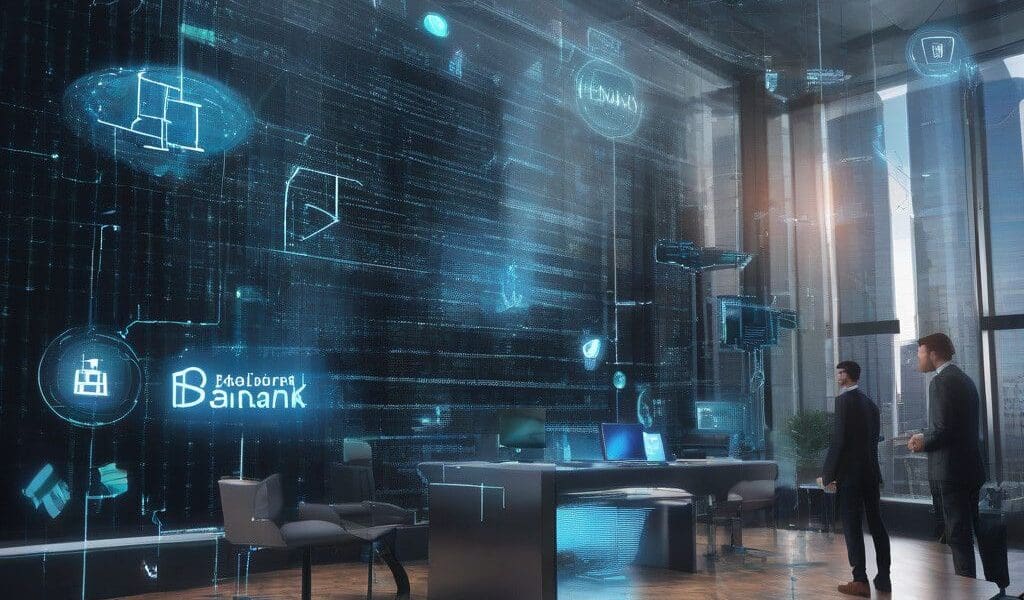Visa’s New Platform: Pioneering Blockchain Integration for Banks
Visa has launched a revolutionary platform aimed at facilitating the integration of blockchain technology within the traditional banking system. The Visa Tokenized Asset Platform (VTAP) is designed to allow financial institutions to mint, transfer, and redeem fiat-backed tokens using public blockchain networks such as Ethereum. This advancement not only modernizes payment processes but also opens up new avenues for banks to leverage digital assets while maintaining regulatory compliance.
In a rapidly shifting financial landscape, banks are under increasing pressure to innovate. The introduction of VTAP aligns with the growing trend towards digital currencies, as institutions seek ways to enhance their operational efficiency and customer service. BBVA, one of Spain’s leading banks, is set to pilot this platform by 2025. This collaboration signifies a crucial step in bridging the gap between traditional banking and emerging blockchain technologies.
Integration with Existing Banking Systems
The VTAP platform is engineered to work seamlessly with 기존 banking systems through the utilization of application programming interfaces (APIs). This strategic design allows banks to explore a wide range of tokenization use cases, from asset management to payment processing. The platform also features programmable capabilities, which can automate complex credit lines and manage payments based on predefined conditions encoded within smart contracts.
For example, a bank could automate the process of issuing loans. Instead of manually reviewing each application, the bank could create a smart contract that evaluates the applicant’s creditworthiness based on predetermined criteria, dramatically speeding up the approval process. This not only enhances operational efficiency but also improves the customer experience by reducing wait times.
Addressing Concerns with Stablecoins
Despite the enthusiasm for blockchain technology, Visa is taking a cautious approach towards the full-scale adoption of stablecoins. Concerns regarding issues such as automatic transactions and regulatory compliance continue to pose challenges. Visa’s leadership has emphasized the importance of mitigating risks while exploring the benefits of digital currencies.
The cautious approach can be seen as a strategic choice, particularly in light of the volatile nature of cryptocurrencies and the regulatory landscape affecting them. Visa aims to ensure that their offerings align with both consumer protection regulations and the sustainability of financial systems.
Impact on the Banking Sector
The implications of Visa’s blockchain platform extend beyond mere technological advancement. By integrating blockchain technology, banks can enhance transparency, reduce costs associated with transactions, and improve overall trust in their operations. The enhanced traceability of blockchain transactions can significantly reduce the potential for fraud, a prevalent concern in traditional banking systems.
Banking analysts have noted that as more institutions pilot and adopt blockchain solutions like VTAP, a shift in consumer expectations may occur. Customers could demand faster, more secure, and cost-effective transaction methods, prompting further adoption of digital assets across the financial sector.
Looking Forward
As financial institutions pilot Visa’s Tokenized Asset Platform, the future of banking seems poised for transformation. The integration of blockchain technology could lead to a more decentralized banking system that operates with greater efficiency and transparency. Industry experts laud this initiative, recognizing it as a potential catalyst for wider adoption of digital currencies and innovative financial solutions.
This shift also raises questions about the future landscape of the financial services industry. With traditional banks now competing with fintech companies that specialize in blockchain implementations, it is likely that the banking sector will undergo significant changes in the months and years ahead.
Conclusion
Visa’s introduction of the VTAP is more than just a technological upgrade; it represents a fundamental shift in how banking institutions can operate within an increasingly digital economy. As banks embrace blockchain technology, they are not only improving their service offerings but are also positioning themselves as key players in the future of finance. By taking a measured yet proactive approach, Visa and participating banks can lead the charge toward a blockchain-integrated economy that promises enhanced efficiency, transparency, and security.








